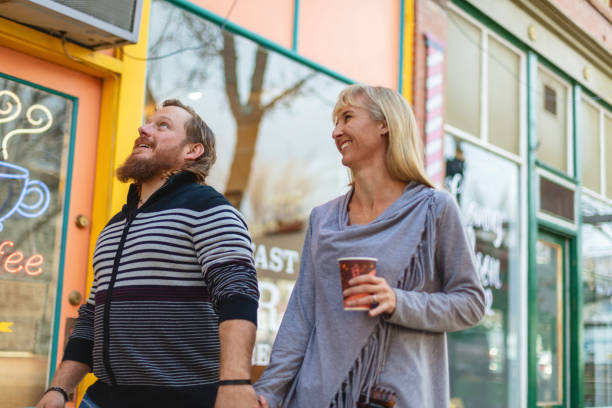Your national campaigns might be reaching millions, but are they speaking to anyone? When consumers scroll past your ads without a second glance, the problem isn't your budget or brand, it's relevance. People want ads that feel like they're from their neighborhood, not from a corporate boardroom three states away.
The solution isn't just geo-targeting by ZIP code. True hyper-local advertising means weaving your brand into the fabric of local communities, events, and conversations. The brands winning this game aren't just advertising locally, they're becoming local. The payoff is measurable.
Why Local Wins (And Generic Ads Leave Money Behind)
The data tells a clear story: consumers crave local relevance. Google/Ipsos research reveals that 4 in 5 U.S. smartphone users expect ads customized to their city, ZIP code, or immediate surroundings. If your ad doesn't feel "from here," most people won't even consider it.
Local intent converts at remarkable rates. After conducting a local search, 76% of people visit a business within 24 hours, and 28% make a purchase. That's high-intent traffic you're missing when you serve generic national creative to local searchers.
Location data drives real business outcomes. In Factual's comprehensive marketer study, 89% reported that location-based marketing increased sales, while 86% grew their customer base. A mobile advertising study found that location-targeted campaigns doubled click-through rates compared to non-localized ads.
Here's the bottom line: running identical national ads everywhere caps your relevance, reach, and conversion potential. Hyper-local messages paired with local placements transform browsing intent into measurable outcomes.
What Hyper-Local Actually Looks Like
Think beyond radius targeting. Make the message itself local.
Name real people and causes. Instead of "Great insurance rates," try "Bob Alvarez, owner of Bob's Insurance on Main St., will match donations for the City Ballet at their gala next Friday." That's community proof and a time-bound reason to act. Cause-related activations have documented positive sales impact when structured properly.
Target local behaviors. Serve creative by neighborhood, venue, or event timing - high school stadium ads on game night, farmers' market messaging during Saturday morning hours, or arts district promotions during monthly gallery walks.
Proven Results You Can Bank On
The performance data is compelling. "Near me now" searches grew over 150% in recent study periods, with local place searches continuing to climb.
Baskin-Robbins achieved a 12% lift in store visits through an audio campaign with location-powered attribution. Brands combining connected TV with location-targeted mobile saw 2× ROAS and 7.8% sales lift when driving in-store traffic.
These aren't outliers—they're proof points for what happens when you match local intent with local creative and local placement.
Your Hyper-Local Playbook
Start with a localization grid. Create rows for markets (cities, ZIP codes, franchise territories) and columns for community hooks (schools, sports, arts, charities), seasonality, weather triggers, and local proof points (owner names, years in town, sponsorships). This generates 50-200 local angles you can rotate.
Turn it into dynamic creative. Use location insertion and feed-based ad customizers to swap city names, agent names, local events, and offers directly in ad text and assets. Google supports this natively in Responsive Search Ads. Pair with location and call extensions so "call Bob on Main St." is one tap away.
Place ads where locals are. Use Nextdoor for neighborhood trust and lead generation, Maps/Waze for high-intent navigation, Meta's store-traffic objective for deduplicated visits, and Google Performance Max for Store Goals to fill coverage across Search, Maps, YouTube, and Display with foot-traffic optimization.
Measure what matters. Track store-visit conversions, foot-traffic lift through Foursquare/GroundTruth, and use Geo-A/B testing to prove incrementality in each territory—not just clicks.
Scale Without Losing Your Soul
You don't need 200 designers to execute hyper-local at scale. Build a structured feed containing market data, store information, addresses, landmarks, partners, events, local offers, and hours. Then let AI generate safe, on-brand variants.
Use ad customizers to slot in {City}, {Neighborhood}, and {StoreName} while rotating cause and event snippets by date. Performance Max for Store Goals and Meta's store-traffic objective optimize to visits, not just clicks, automating the media buying process while maintaining local relevance.
The Money You're Leaving Behind
Every day you run generic national ads, you're ignoring 4 in 5 people who prefer location-relevant advertising—reducing your click-through rates and quality signals. You're missing high-intent local demand that converts within 24 hours. Most importantly, you're forfeiting documented sales lift from location-based marketing, with published cases showing +1.7% to +12% visit lift and higher ROAS.
The question isn't whether hyper-local advertising works—the data proves it does. The question is whether you're ready to stop shouting into the void and start having conversations with your actual neighbors.
Your next customer isn't looking for the biggest national brand. They're looking for the one that feels like home.

